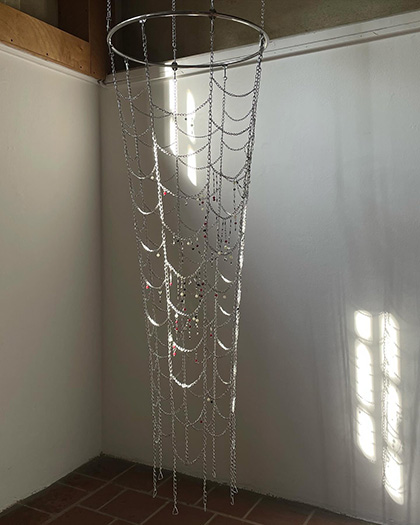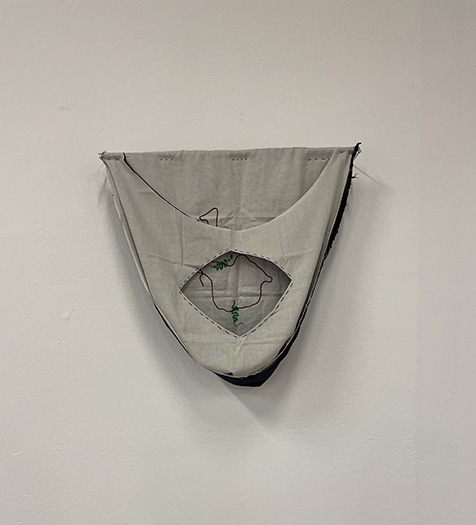In Karachi, peripheral regions do not just include the outskirts, but also informal settlements, densely populated neighbourhoods, and regions that experience infrastructural neglect. Despite all its flaws, this city is a magnet for economic opportunities, drawing populations from Sindh, Balochistan, Punjab, Khyber Pakhtunkhwa and the Northern Territories. The periphery which encloses Karachi is then, not just a rural or non-urban space—it is a relational area shaped by both opportunity and separation from the dominant urban centres. Here, we see a particular interest across the artworks bringing topography and landscape to the forefront; the undulating sandhills dotted with tamarisk, grassy farmlands, or the rocky pathways on the outskirts of Karachi, are physical features, in sharp contrast to the visuals of the city. Living within traffic-choked roads and little space, can at times push the artist to escape this city and revisit previous and ancestral lands.
Historically, the land which Pakistan inhabits, has played a key role in both the terrestrial and maritime Silk Routes. Silk, carpets, brocades, precious stones, spices, manuscripts, metal, cotton and leather goods were items of trade which passed through the valleys, riverbeds and coast (Dani; 1996). By the early 20th century, hubs of prosperity in South Asia meant mass development in focal points, creating deeper divisions between the city and the smaller towns and villages. In recent times, we have seen an increase of students from neighbouring regions come to Karachi to study. Their work often responds to childhood homes as well as their shifting and travelling experiences.From the mud volcanoes of Hinglaj on the Makran coast, to the relics of Mohenjo-daro, many of our students delve into site specific research to the east, west, and north of Karachi. It is at times both the distance and journey to and from these sites, as well as the availability of resources the urban city and the university provides them with, which allows them to develop sensitive and articulate responses to peripheral locations.
While we continue to investigate where do these peripheries begin and end, the artworks make it clear that it is increasingly difficult to draw a boundary around this city as its influence echoes far beyond its demarcations on a map. We find that there is a distinct intention in the artworks of this section, posing a question to the viewer; if they could leave their bodies, and experience life as somebody who inhabits marginal spaces of the city, what would they be able to see for the first time?

















































